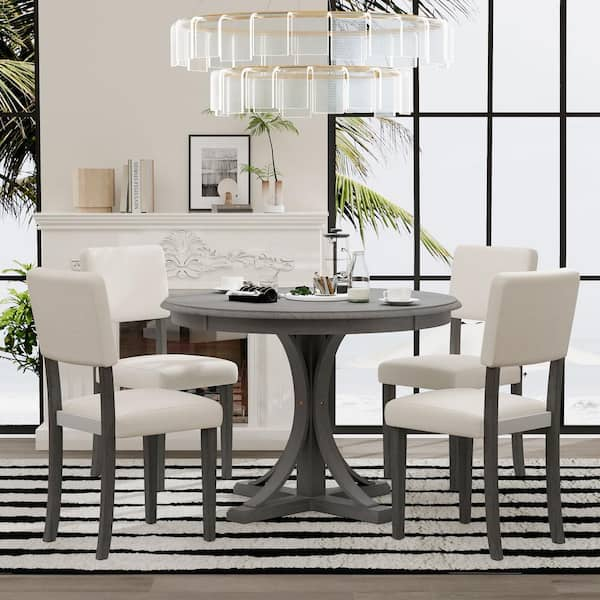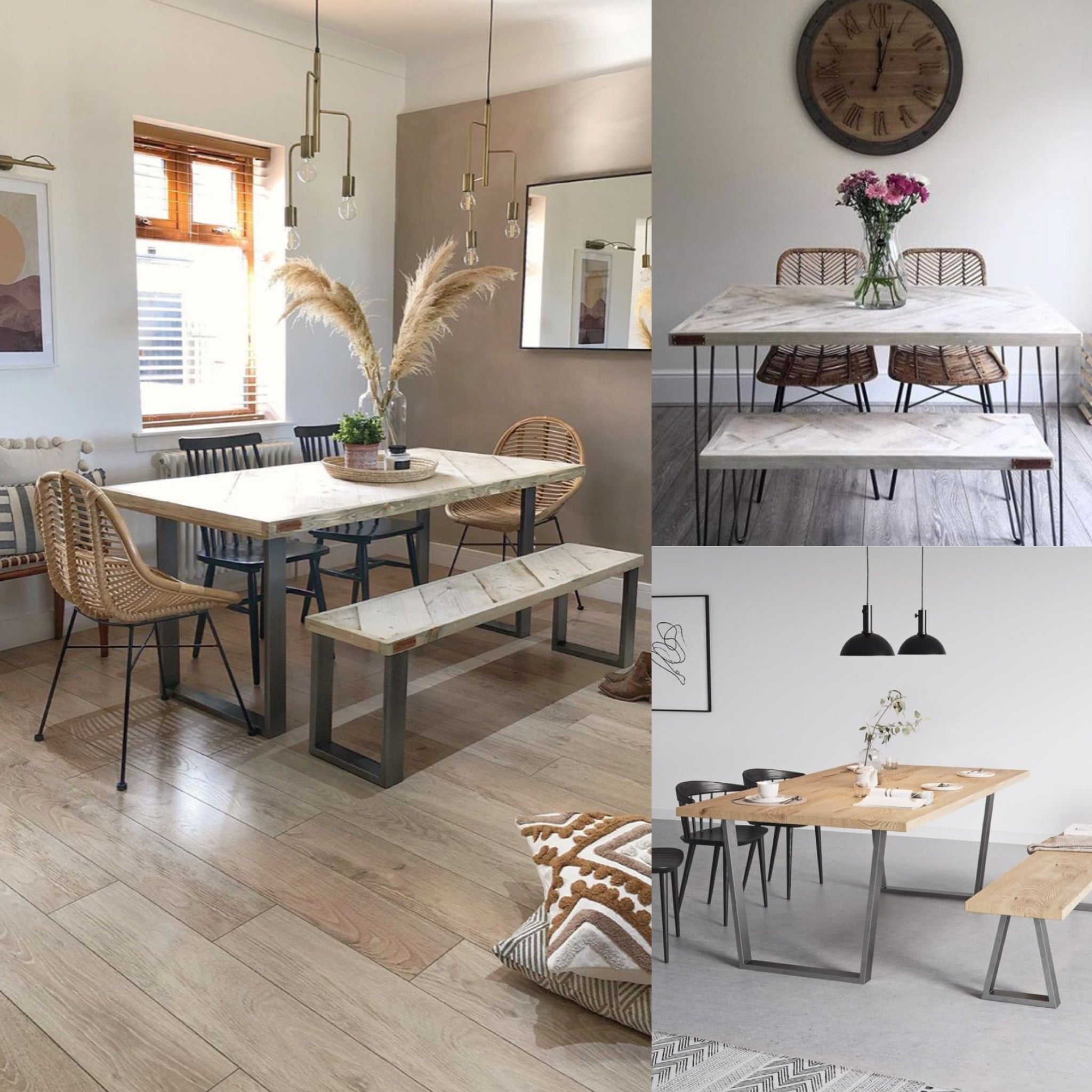How to Choose the Perfect Dining Room Table Legs for Your Home
Exactly How to Select the Perfect Dining-room Table Legs for Your Home Design
Picking the optimal dining area table legs is a nuanced process that needs careful factor to consider of numerous components, including your room restraints, visual choices, and practical demands. The interaction in between materials, styles, and dimensions can dramatically influence the atmosphere of your dining area, making it essential to approach this choice carefully.
Assess Your Dining Space
Examining your dining room is crucial for picking the right table legs that match both aesthetics and performance. Begin by gauging the dimensions of your eating area, consisting of ceiling height, flooring area, and proximity to various other furnishings. This details will help establish the proper dimension and height of your table, which straight affects the choice of table legs.
Following, consider the design and design of your eating space. An open-concept layout may profit from table legs that supply visual lightness, such as slender steel or acrylic alternatives. On the other hand, a more standard setup might call for strong wood legs that supply a sense of durability.
Review the existing shade palette and materials in your eating location. Integrating the table legs with these components produces a cohesive appearance that enhances the overall decor.
Ultimately, an extensive evaluation of your eating room will certainly assist you in making a notified decision, ensuring that your table legs not just improve the visual appeal yet additionally offer useful purposes.
Consider Your Design Preferences
When selecting dining-room table legs, it is vital to assess your individual style choices, as they considerably influence the total aesthetic of your dining room. Your option of table legs can either complement or comparison with existing decor, making it critical to straighten them with your preferred interior decoration motif.
If your home leans in the direction of a modern visual, think about sleek steel or minimal wooden legs that provide a tidy, uncluttered appearance. For a more traditional approach, luxuriant wooden legs with intricate makings can add a touch of sophistication and elegance. Industrial styles gain from robust, basic materials such as reclaimed timber and steel combinations, showing a sturdy beauty.
Furthermore, farmhouse and rustic designs typically prefer sturdy, beefy legs that evoke a feeling of heat and comfort. Alternatively, if your decoration is diverse, you might select unconventional shapes or a mix of products to develop visual interest.

Evaluate Product Options
The selection of material for dining room table legs plays a critical function in both sturdiness and visual allure. Usual products consist of timber, steel, and composite options, each offering distinct qualities that can influence the general look and longevity of your table.
Wood is a classic option, understood for its heat and convenience. Woods like oak and walnut give extraordinary toughness and can be completed in different spots to match any type of decoration. Softwoods like ache are extra vulnerable to damages and scrapes, making them less suitable for high-traffic locations.
Steel legs, commonly crafted from steel or light weight aluminum, show modernity and commercial beauty. They are very long lasting and immune to put on, making them appropriate for households with kids or regular celebrations (dining room table legs). Furthermore, metal can be ended up in various colors, boosting the customization possibilities
Composite products, such as MDF or laminate, offer affordability and varied designs. While commonly less resilient than strong wood or metal, they can still supply an elegant appearance and are often very easy to preserve.
Ultimately, the product you select should line up with your lifestyle, visual preferences, and the level of usage your table will experience.
Determine Elevation and Size
Choosing the proper height and dimension for your dining space table is important for both functionality and convenience. The common height for eating tables usually varies from 28 to 30 inches, enabling enough legroom for many people when seated. It is vital to take into consideration the measurements of your dining area and the kinds of chairs you plan to utilize.

Furthermore, consider the proportions of your dining space. A larger table in a roomy location can develop a grand setting, while a smaller sized table functions well in even more intimate setups. Inevitably, the appropriate elevation and size will certainly harmonize with your total design and enhance the dining experience for you and your guests.
Explore Modification Possibilities

In addition, the style of the legs can be personalized to fit various designs, such as rustic, contemporary, or industrial. For instance, conical legs can evoke a mid-century modern-day feeling, while chunky, block-style legs might resonate with traditional or farmhouse design.
House owners can additionally discover color coatings, from natural timber stains to repaint, enabling them to match or comparison with the table top and bordering design.
Furthermore, leg elevation can be adjusted to suit particular seating setups or personal choices, enhancing both comfort and capability.
Finally, one-of-a-kind decorations, such as makings or decorative braces, click this can further customize the table legs, making the eating experience not just a declaration but a meal item in the home. By thinking about these modification options, house owners can develop a dining space table that absolutely reflects their uniqueness.
Verdict
Selecting the suitable eating room table legs requires mindful factor to consider of different variables, including the dimensions of the dining space, design choices, product more information toughness, and desired height. Personalization alternatives better boost the ability to achieve a cohesive aesthetic that complements the general design. By methodically examining these components, home owners can guarantee that the selected table legs not only meet practical demands yet additionally add favorably to the dining experience and atmosphere of the home.
Picking the excellent eating area table legs is a nuanced procedure that calls for cautious consideration of various elements, including your space restrictions, aesthetic preferences, and practical needs.Assessing your dining room is crucial for selecting the right table legs that enhance both aesthetic appeals and performance.When figuring out size, measure the area where the table will certainly be put to ensure it description fits comfortably, permitting for at the very least 36 inches of clearance around the table for easy activity. A larger table in a roomy area can develop a grand atmosphere, while a smaller table functions well in even more intimate settings.Selecting the optimal dining area table legs needs careful factor to consider of different elements, consisting of the measurements of the eating room, style choices, product sturdiness, and desired elevation.